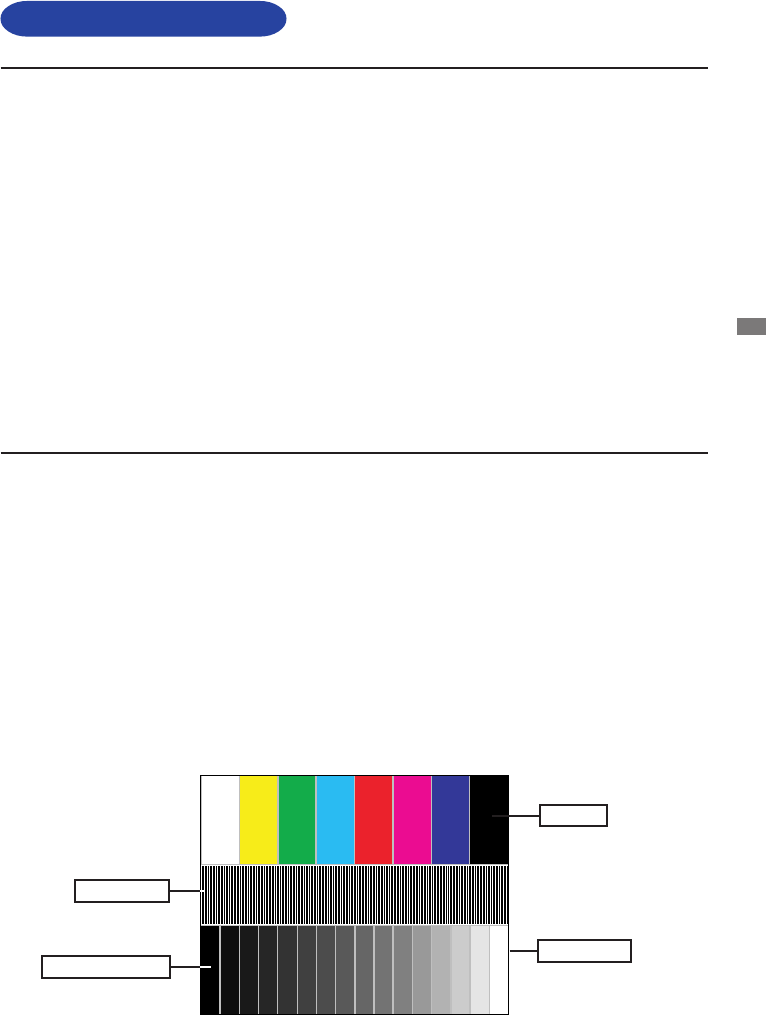
ENGLISH
OPERATING THE MONITOR 15
SCREEN ADJUSTMENTS
The screen adjustments described in this manual are designed to set image position and minimize
flicker or blur for the particular computer in use.
The monitor is designed to provide the best performance at resolution of 1024 × 768, but can not
provide the best at resolutions of less than 1024 × 768 because the picture is automatically stretched
to fit the full screen. It is recommended to operate at resolution of 1024 × 768 in normal use.
Displayed text or lines will be blurred or irregular in thickness when the picture is stretched due to
the screen enlargement process.
It is preferable to adjust the image position and frequency with the monitor controls, rather than the
computer software or utilities.
Perform adjustments after a warm-up period of at least thirty minutes.
Additional adjustments may be required after the Auto Set-up depending on the resolution or signal
timing.
The Auto Set-up may not work correctly when displaying the picture other than the screen
adjustment pattern. In this case, manual adjustments are required.
There are two ways to adjust the screen. One way is automatic adjustment for Clock, Phase and
Position. The other way is performing each adjustment manually.
Perform the Auto Set-up first when the monitor is connected to a new computer, or resolution is
changed. If the screen has a flicker or blur, or the picture does not fit in the display area after
performing the Auto Set-up, manual adjustments are required. Both adjustments should be made by
using the screen adjustment patterns in the Adjustment Program on the Information CD.
This manual explains adjustment under Windows 95/98/2000/Me/XP.
AA
AA
A
Start “Adjustment Program” in the Information CD.
BB
BB
B
Select the resolution for your monitor - the adjustment pattern then appears.
[Adjustment pattern]
Zebra pattern
Color bar
Picture frame
16-level gray scale
Adjust the image by following the procedure below to get the desired picture when selecting Analog input.
